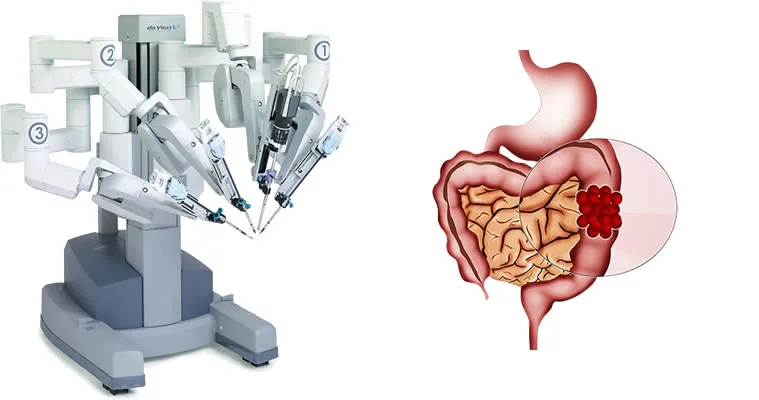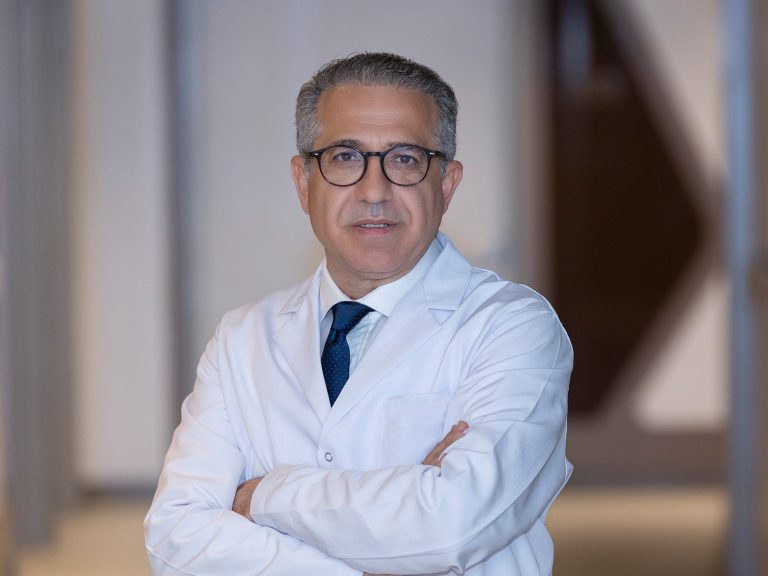Robotic Gastric Cancer Surgery
Robotic gastric cancer surgery is a minimally invasive procedure performed using the Da Vinci Robotic Surgical System. The primary goal of this surgery is to safely remove cancerous cells and tumors located in the stomach. During the operation, care is taken to preserve healthy tissues and surrounding organs. Thanks to the robotic system’s high-resolution 3D camera, the surgeon can view the surgical area in great detail and control the robotic arms with high precision from the console.

How Is the Surgery Performed?
Robotic gastric cancer surgery may require the removal of part or all of the stomach tissue depending on the extent of the disease. The procedure begins with the placement of robotic surgical instruments and a camera system through small incisions made in the abdominal area. The surgeon sits at a console to control the robotic arms. These arms have 360-degree mobility, allowing for precise surgical intervention even in areas unreachable by the human hand. The advanced imaging system can magnify tissues up to ten times, enabling the removal of tumors without damaging healthy tissue.
What Are the Advantages of Robotic Surgery?
-
Minimal Incisions: Since large surgical cuts are not required, post-operative scars are smaller.
-
Reduced Bleeding and Infection Risk: Small incisions significantly lower the risk of complications compared to open surgery.
-
Less Pain and Faster Recovery: Patients experience less pain, have shorter hospital stays, and return to daily life more quickly.
-
Surgeon Comfort: Operating from a seated position reduces physical fatigue and allows the surgeon to work with enhanced focus.
-
High Image Quality: The 3D and HD imaging system provides a clearer and more detailed view of the surgical area.
How Does Robotic Surgery Work?
-
Preparation
The patient is placed under general anesthesia. Several small incisions (approximately 8 mm) are made in the abdominal area. -
System Setup
The robotic surgery system consists of multiple components: the surgeon’s control console, a 3D camera system, and robotic arms. -
Surgical Intervention
Using the robotic arms, the surgeon carefully removes the cancerous tissue while avoiding damage to healthy structures. Once the procedure is complete, the incisions are closed and the patient enters the recovery phase.
Postoperative Recovery Process
After surgery, the patient’s overall condition is closely monitored. Pain management is provided, and potential complications are observed. Patients are usually discharged after a few days in the hospital. Gradual reintroduction of eating and physical activity is encouraged. Following medical advice on wound care, nutrition, and lifestyle can significantly accelerate recovery. A follow-up appointment is typically scheduled within the first week after surgery.
Possible Risks and Complications
As with any surgical procedure, robotic gastric cancer surgery carries certain risks. These may include complications related to anesthesia, infection, or bleeding. However, due to the minimally invasive and precise nature of robotic surgery, these risks are significantly lower compared to traditional open surgeries.
TREATMENTS

